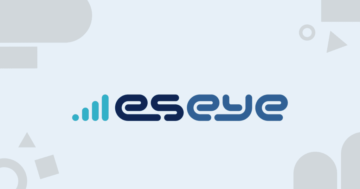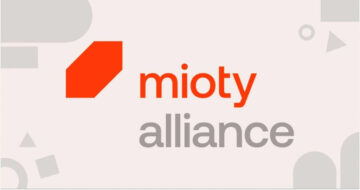
Machine learning is an interesting subject in computer science. It allows computers to learn and improve based on data patterns. Actually, data is the base of machine learning. And to achieve correct results, the data must be precise. Additionally, data annotation is one significant aspect of machine learning. So, this article will discuss what annotation is, its importance, and its challenges.
What is Data Annotation?
Data annotation, simply put, is the process of labeling or tagging data to make it known to computers. The tagged data can be texts, images, and videos.
When data is tagged, it enables machine learning models to act accurately, to produce the desired results. By continuously using it, computers are trained more efficiently to process available information and build on it for better decision-making.
During data annotation, humans, also known as annotators, carefully review and mark the data according to the necessary criteria. These serve as ground truth labels, which help the machine learning model understand and generalize patterns in new, unseen data.
Why is Data Annotation Crucial for Machine Learning?
- Accurate and Well-Structured Datasets
It produces well-structured datasets that are important for training machine learning models effectively. Clean and labeled data ensures that the algorithm can learn patterns and similarities more efficiently. Finally leading to improved accuracy and performance. - Enhanced Model Performance
It assists machine learning models in understanding difficult features and making better decisions. For instance, in computer vision tasks, annotating objects in images enables the model to identify and classify objects accurately. - Domain-Specific Insights
It allows machines to understand domain-specific information. For instance, in the medical field, it helps diagnose diseases from medical images, enabling faster and more accurate healthcare decisions.
What is AI Data Annotation?
The definition of AI data annotation is similar to the one above. It is an extension of it. It is the process of tagging data, to improve the performance of an AI model.
So, this process is handled by what is called an AI annotator. It takes consumer data and labels it to improve the result and accuracy of an AI model— an example can be an AI chatbot model.
Challenges and Solutions in AI Data Annotation
Data annotation is a crucial process that involves labeling and categorizing data, enabling AI systems to understand and interpret information. Thus, Here are some challenges and their respective solutions.
Insufficient and Inconsistent Data
One of the primary challenges in this is the availability of insufficient and inconsistent data. When AI algorithms receive limited data for training, they may not grasp the full context of real-world scenarios. Moreover, inconsistencies in data labeling can lead to confusion and incorrect model predictions.
Solution
To tackle this challenge, organizations must invest in thorough data collection and employ human annotators to ensure data accuracy. Additionally, data techniques can help in creating diverse datasets. Finally, reviewing and refining the annotation guidelines will also enhance consistency.
High Cost and Time-Consuming Annotation
It can be a labor-intensive and time-consuming process—especially for large-scale datasets. Thus, the cost of hiring human annotators or using manual annotation tools can be significant, impacting project budgets and timelines.
Solution
Active learning methods can mitigate the cost and time. By selecting the most valuable data for annotation, AI models reduce workload. Furthermore, crowdsourcing platforms and collaborative annotation tools can ease the process.
Maintaining Data Privacy and Security
Data privacy and security are major concerns in the AI industry. Annotating sensitive or personal information without proper precautions can lead to data breaches and legal implications.
Solution
Data privacy should be ensured by anonymizing sensitive information. Data will be safeguarded through strict access controls and encryption. Regular training for annotators regarding data protection guidelines is essential.
Conclusion
Overall, AI data annotation is a crucial process for the success of various AI technologies. However, its challenges can be challenging. So, by overcoming these challenges, can AI models truly reach their optimum potential. Finally, organizations should invest in thorough data collection, and prioritize data privacy, to pave the way to a better AI data annotation process.
- SEO Powered Content & PR Distribution. Get Amplified Today.
- PlatoData.Network Vertical Generative Ai. Empower Yourself. Access Here.
- PlatoAiStream. Web3 Intelligence. Knowledge Amplified. Access Here.
- PlatoESG. Automotive / EVs, Carbon, CleanTech, Energy, Environment, Solar, Waste Management. Access Here.
- PlatoHealth. Biotech and Clinical Trials Intelligence. Access Here.
- ChartPrime. Elevate your Trading Game with ChartPrime. Access Here.
- BlockOffsets. Modernizing Environmental Offset Ownership. Access Here.
- Source: https://www.iotforall.com/understanding-the-role-of-data-annotation-in-machine-learning
- :is
- :not
- 1
- a
- above
- access
- According
- accuracy
- accurate
- accurately
- Achieve
- Act
- actually
- Additionally
- AI
- AI Data
- AI models
- AI systems
- algorithm
- algorithms
- allows
- also
- an
- and
- ARE
- article
- AS
- aspect
- assists
- availability
- available
- base
- based
- BE
- Better
- breaches
- Budgets
- build
- by
- called
- CAN
- carefully
- categorizing
- challenge
- challenges
- challenging
- Classify
- collaborative
- collection
- computer
- computer science
- Computer Vision
- computers
- Concerns
- confusion
- consumer
- consumer data
- context
- continuously
- controls
- correct
- Cost
- Creating
- criteria
- Crowdsourcing
- crucial
- data
- Data Breaches
- data privacy
- data protection
- datasets
- Decision Making
- decisions
- definition
- desired
- diagnose
- difficult
- discuss
- diseases
- diverse
- ease
- effectively
- efficiently
- enables
- enabling
- encryption
- enhance
- ensure
- ensures
- essential
- Ether (ETH)
- example
- extension
- faster
- Features
- field
- Finally
- For
- from
- full
- Furthermore
- grasp
- Ground
- guidelines
- handled
- healthcare
- help
- helps
- here
- Hiring
- However
- HTTPS
- human
- Humans
- IBM
- identify
- images
- impacting
- implications
- importance
- important
- improve
- improved
- in
- industry
- information
- instance
- interesting
- Invest
- involves
- iot
- IT
- ITS
- jpg
- known
- labeling
- Labels
- large-scale
- lead
- leading
- LEARN
- learning
- Legal
- Limited
- machine
- machine learning
- Machines
- major
- make
- Making
- manual
- mark
- max-width
- May..
- medical
- methods
- Mitigate
- model
- models
- more
- Moreover
- most
- must
- necessary
- New
- objects
- of
- on
- ONE
- optimum
- or
- organizations
- overcoming
- patterns
- pave
- performance
- personal
- personal information
- Platforms
- plato
- Plato Data Intelligence
- PlatoData
- potential
- precise
- Predictions
- primary
- Prioritize
- privacy
- Privacy and Security
- process
- produce
- produces
- project
- proper
- protection
- put
- reach
- real world
- receive
- reduce
- refining
- regarding
- regular
- respective
- result
- Results
- review
- reviewing
- Role
- safeguarded
- scenarios
- Science
- security
- selecting
- sensitive
- serve
- should
- significant
- similar
- similarities
- simply
- So
- Solutions
- some
- strict
- subject
- success
- Systems
- tackle
- takes
- tasks
- techniques
- Technologies
- that
- The
- their
- These
- they
- this
- Through
- Thus
- time
- time-consuming
- timelines
- to
- tools
- trained
- Training
- truly
- truth
- understand
- understanding
- using
- Valuable
- various
- Videos
- vision
- Way..
- What
- What is
- when
- which
- will
- without
- zephyrnet








